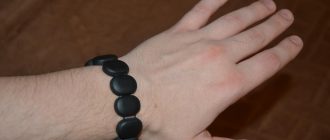Are your shoes dirty and smelly? Don't worry! With proper cleaning, you can extend their life and keep them fresh. Different materials need specific cleaning methods, but you don't need expensive products.
This guide offers simple steps for proper shoe cleaning. You'll learn how to remove tough stains and bad smells. These techniques work for various shoe types, from sneakers to boots.
We'll show you effective methods for removing stubborn stains and restoring your footwear. You'll find practical solutions for everyday dirt and tough grass marks. These easy steps will make shoe maintenance simple.
Got muddy sports cleats or worn-out everyday shoes? Our straightforward techniques will help. Let's transform your dirty kicks into clean, comfy footwear!
Understanding Different Shoe Materials
Effective shoe cleaning requires knowing each material's unique properties. Using incorrect methods can ruin your favorite shoes. Understanding materials is crucial for proper shoe care.
Different materials need specific cleaning approaches. This helps maintain their look and extend their life. Let's explore common shoe materials and their cleaning needs.
Canvas and Fabric Shoes
Canvas and fabric shoes are easy to clean. They absorb water quickly and dry fast. Most are machine-washable on gentle cycles.
These shoes can handle direct scrubbing with soap and water. Fabric shoes allow deep cleaning, making stain removal easier. However, they may need longer drying times.
Leather and Suede Footwear
Leather and suede need gentle cleaning. Too much water can crack leather or ruin suede's texture. These materials work best with special cleaners and conditioners.
For leather, clean spills right away. For suede, use a dedicated brush in one direction. Avoid soaking or using harsh detergents on these materials.
Athletic and Running Shoes
Modern athletic shoes are tricky to clean. They have many materials like mesh, synthetics, rubber, and foam. They also have special parts like air cushions.
Running shoes often have easy-to-clean mesh. But harsh cleaning can harm their cushioning and support. Remove insoles before cleaning and avoid long soaks.
Essential Supplies for Shoe Cleaning
Cleaning your shoes requires the right tools. With proper supplies, you can protect your footwear from damage. Let's look at the must-haves for your shoe cleaning toolkit.
Cleaning Solutions and Detergents
Different shoes need specific cleaning solutions. Mild dish soap mixed with warm water works for most materials. Specialized cleaners like Jason Markk offer gentle formulas for premium footwear.
For white shoes, add hydrogen peroxide or baking soda to your solution. Avoid harsh chemicals like bleach, which can damage and discolor materials.
Brushes and Tools
The right brushes are crucial for effective shoe cleaning. Soft-bristled brushes work well for canvas and mesh. Medium-bristle brushes are best for rubber soles and tough stains.
Old toothbrushes are great for hard-to-reach areas. Use microfiber cloths for gentle wiping and applying solutions. For suede, use a dedicated brush to maintain texture.
Household Alternatives
Common items can be effective for shoe cleaning. Baking soda mixed with water removes stains and odors. White vinegar cuts through grime and eliminates smells.
Magic erasers work well on rubber and white midsoles. Baby wipes can handle light dirt on most materials. These household items save money and clean effectively.
How to Wash Shoes: Step-by-Step Guide
Dirty shoes? No problem! This guide will help you clean them like a pro. Learn how to make your favorite footwear look new again. Follow these steps to clean your shoes without damaging them.
Preparing Your Shoes
Remove loose dirt and debris before washing. Tap shoes together outdoors or over a trash can. This will get rid of dried mud and grit.
Use a soft brush to sweep away remaining dirt. Focus on the outsoles and seams. For stubborn dirt, try dry brushing in circles.
This prep work prevents scratching during washing. It also helps cleaning solutions work better on actual stains.
Removing Laces and Insoles
Take out shoelaces and insoles before washing the main shoe. These parts collect bacteria and dirt but need different cleaning methods.
Wash laces in a mesh bag with regular detergent. Wipe insoles with a cloth dampened with mild soap and water.
For smelly insoles, soak them in warm water and baking soda. Rinse and air dry afterward. This ensures all parts get clean without damaging the shoe.
Pre-treating Stained Areas
Look for heavily soiled spots that need extra attention. Oil marks, grass stains, and scuffs often require special treatment.
Make a paste with baking soda and water for most stains. Rub it gently into the stained area. Let it sit for 15-20 minutes.
For tough stains on canvas or synthetic materials, use laundry stain remover. Avoid bleach or harsh chemicals that can damage the shoe.
After pre-treating, blot the area with a damp cloth. This removes excess cleaning solution before the main wash.
Drying Techniques
Drying is crucial when learning how to wash shoes. Never dry wet shoes in direct sunlight or near heat sources.
Stuff damp shoes with paper towels or clean newspaper. This absorbs moisture and keeps their shape. Replace the paper every few hours.
Put shoes in a well-ventilated area at room temperature. Use a fan to circulate air around them. This prevents mildew and preserves the shoe's structure.
For faster drying, place shoes near a dehumidifier. You can also use silica gel packets inside them. Most shoes need 24-48 hours to dry completely.
Machine Washing Shoes Safely
Machine washing shoes can be a quick fix for certain footwear types. Follow these tips to protect your shoes from damage. Learn which shoes can handle the washer and how to prep them.
Which Shoes Can Be Machine Washed
Some shoes can handle the washer, while others can't. Materials play a big role in this. Let's look at which shoes are safe to wash.
Safe for Machine Wash
Canvas shoes like Converse and Vans are machine-washable champions. Most athletic shoes with synthetic materials can handle a gentle cycle. Fabric sneakers and cloth slip-ons usually survive the washer with care.
Never Machine Wash These Types
Keep leather shoes and boots away from your washing machine. Suede footwear should never be machine washed. Shoes with delicate embellishments or glued parts are also poor choices.
High-end designer shoes and those with special cushioning need hand-cleaning only.
Preparing Shoes for the Washing Machine
Prep work is key for successful machine washing. Remove laces and wash them in a small mesh bag. Take out insoles if possible and clean them by hand.
Brush off loose dirt before washing. This prevents machine clogs and improves cleaning results. Place shoes in a mesh bag or pillowcase for protection.
Add old towels to balance the machine and reduce noise. This cushioning also minimizes potential damage to your footwear and washer.
Best Machine Settings and Detergents
Use cold water to prevent glue breakdown and color fading. Choose the gentle cycle for enough cleaning without excess agitation.
Pick a mild liquid detergent without bleach. Specialty shoe cleaners work well, but gentle laundry soap is usually enough. Skip fabric softeners to avoid dirt-attracting residue.
For extra-dirty shoes, add baking soda to boost cleaning power. Use less detergent to avoid rinse problems.
Proper Drying After Machine Wash
Never put shoes in the dryer. Heat can warp materials and melt glue. Tumbling can damage your shoes' structure.
Stuff wet shoes with paper towels to maintain shape and absorb moisture. Replace stuffing as it gets wet for faster drying.
Place shoes in a well-ventilated area away from direct heat. A fan can speed up drying time. Most shoes need 24-48 hours to dry fully.
Hand-Washing Different Shoe Types
Hand-washing is the safest way to clean shoes. It gives you control over the process. This method preserves shape, color, and integrity while achieving excellent results.
Washing Canvas Shoes
Canvas shoes clean well with hand-washing. Mix lukewarm water and mild detergent for a cleaning solution. Remove laces and insoles before cleaning them separately.
Use a soft-bristled brush to scrub the canvas gently. Focus on heavily soiled areas without saturating the fabric. For tough stains, apply a baking soda paste for 15-20 minutes.
Wipe away soap with a damp cloth. Stuff shoes with paper towels while air-drying. This helps maintain their shape.
Cleaning Sneakers and Athletic Footwear
Start by removing dirt with a dry brush. Focus on soles and treads where debris collects. Use a damp cloth for mesh and fabric sections.
Avoid soaking mesh materials to protect the shoe's structure. Scrub rubber soles and toe caps with a firmer brush. For yellowed white parts, try baking soda and hydrogen peroxide.
Dry athletic shoes away from heat and sunlight. This prevents warping and material breakdown.
Gentle Cleaning for Delicate Materials
Suede, nubuck, and fine leather need extra care. Spot cleaning is essential for these materials. Use cleaners designed for each specific type.
Use a suede brush for surface dirt on suede and nubuck. Address small stains with a suede eraser. For leather, wipe with a damp cloth and mild soap.
Use minimal moisture on delicate materials. Stuff shoes with acid-free tissue while drying. Apply leather conditioner once dry to prevent cracking.
Tackling Stubborn Stains and Scuffs
Tough stains and scuffs need special care to restore your shoes. Regular cleaning helps, but some marks need extra treatment. The key is knowing the stain type and using the right method for your shoe material.
Mud and Dirt Removal
Let muddy shoes dry completely before cleaning. Brush off dry dirt with a soft-bristled brush or old toothbrush. For stubborn dirt, use warm, soapy water and a brush.
Work in small circles, then rinse with clean water. Blot with a microfiber cloth to remove extra moisture.
Oil and Grease Stains
Blot excess oil with a paper towel. Don't rub it deeper into the material. Apply cornstarch, baking soda, or baby powder to the stain overnight.
Brush away the powder the next day. Treat any leftover stain with dish soap on a damp cloth. Use leather conditioner for leather shoes.
Salt Stains and Water Marks
Mix equal parts white vinegar and water for salt stains. Dab the mixture on stains with a clean cloth. For water marks on leather, use a damp cloth, then a dry one.
Suede needs special care. Use a suede brush after cleaning. Let shoes dry naturally, away from direct heat.
Scuff Mark Solutions
A pencil eraser works well on canvas shoe scuffs. Rub gently until the mark vanishes. Brush away any leftover eraser bits.
For leather scuffs, use petroleum jelly or olive oil on a soft cloth. Rub in circles, then buff with a clean part of the cloth.
Try nail polish remover (acetone-free) on patent leather. For white sneakers, make a paste with baking soda and water. Always test solutions on a hidden spot first.
Deodorizing and Freshening Smelly Shoes
Persistent odors can ruin great shoes. Bacteria thrive in warm, moist footwear environments. Luckily, deodorizing smelly shoes is easier than you might think.
Solutions range from simple household items to specialized products. These can eliminate even the most stubborn odors effectively.
Natural Deodorizing Methods
Effective shoe deodorizers are often found in your kitchen or bathroom. These natural solutions absorb moisture and neutralize odors without harsh chemicals.
Baking Soda Treatments
Baking soda powerfully absorbs odors. Sprinkle 2-3 tablespoons inside each shoe and shake to distribute evenly. Let it sit overnight and tap out the powder before wearing.
For deeper cleaning, make a paste with water. Gently scrub the paste inside the shoe before rinsing thoroughly.
Essential Oil Solutions
Tea tree, lavender, and citrus oils naturally fight bacteria. Mix 5-7 drops of oil with a tablespoon of baking soda. Sprinkle this mixture inside your shoes for fresh scent.
For a spray version, combine 10 drops with 1/4 cup of water. Put this in a spray bottle and mist your shoes lightly.
Commercial Deodorizing Products
Commercial deodorizers offer stronger solutions when natural methods fall short. Antibacterial sprays work well for fabric and athletic shoes. They provide immediate odor relief.
For leather footwear, use specialized leather-safe sprays. These prevent damage to delicate materials while deodorizing effectively.
Shoe inserts with activated charcoal or cedar chips provide ongoing odor control. UV shoe sanitizers kill 99.9% of odor-causing bacteria quickly.
Preventing Future Odors
Prevention is key for keeping shoes fresh. Allow shoes to dry completely between wears, ideally for 24 hours. Use shoe trees to maintain shape and improve air circulation.
Wear moisture-wicking socks made of merino wool or synthetic blends. These are better than cotton, which traps moisture. Rotate between multiple pairs of shoes.
For athletic shoes, remove insoles after workouts. Let both the insole and shoe interior dry separately. This habit can significantly extend your footwear's freshness.
Shoe Care and Maintenance Tips
A consistent shoe care routine keeps your favorite footwear fresh for years. Maintaining shoe condition prevents damage and extends their life. Regular attention helps avoid problems that lead to early replacement.
Regular Cleaning Schedule
Different shoes need varying maintenance based on use and material. Wipe everyday footwear with a dry cloth after each wear. This removes surface dirt quickly.
Spot clean athletic shoes weekly, focusing on sole edges and toe areas. Set a monthly reminder to inspect all your shoes thoroughly. This helps address minor scuffs before they worsen.
Always clean seasonal footwear before storing 10 лучших казино онлайн. Dirt left for months becomes harder to remove later.
Protective Sprays and Treatments
Preventative treatments create a barrier against stains and moisture. Apply water-repellent spray to canvas shoes every 3-4 weeks during heavy use. Leather footwear needs special conditioners to prevent cracking while maintaining breathability.
Test new products on a hidden area first. Apply sprays in a well-ventilated space. Let shoes dry completely before wearing. Reapply protectants after cleaning or exposure to harsh conditions.
Storage Recommendations
Proper storage greatly impacts shoe longevity. Use shoe trees for leather footwear to maintain shape. Stuff sneakers with acid-free tissue to prevent creasing.
Keep shoes in a cool, dry place away from sunlight https://bushibet.com. Avoid plastic bags that trap moisture. Use breathable cotton bags or original shoe boxes instead.
Store boots upright or use boot shapers. This prevents shafts from folding and cracking.
Keep Your Footwear Looking New Longer
Proper cleaning techniques can extend your favorite shoes' life by years. Regular maintenance is a smart investment. Well-cared-for footwear can last 3-5 times longer than neglected pairs.
Regular cleaning prevents dirt from breaking down materials. It preserves the shoe's structure and saves you money. This eco-friendly practice also reduces waste.
Clean shoes make a powerful statement about your personal care. They signal attention to detail in interviews, dates, and daily activities.
Start by cleaning one favorite pair of shoes. You'll likely want to refresh your entire collection after seeing the transformation.
Your shoes support you every day. Proper care ensures they'll carry you in style and comfort for many miles.



